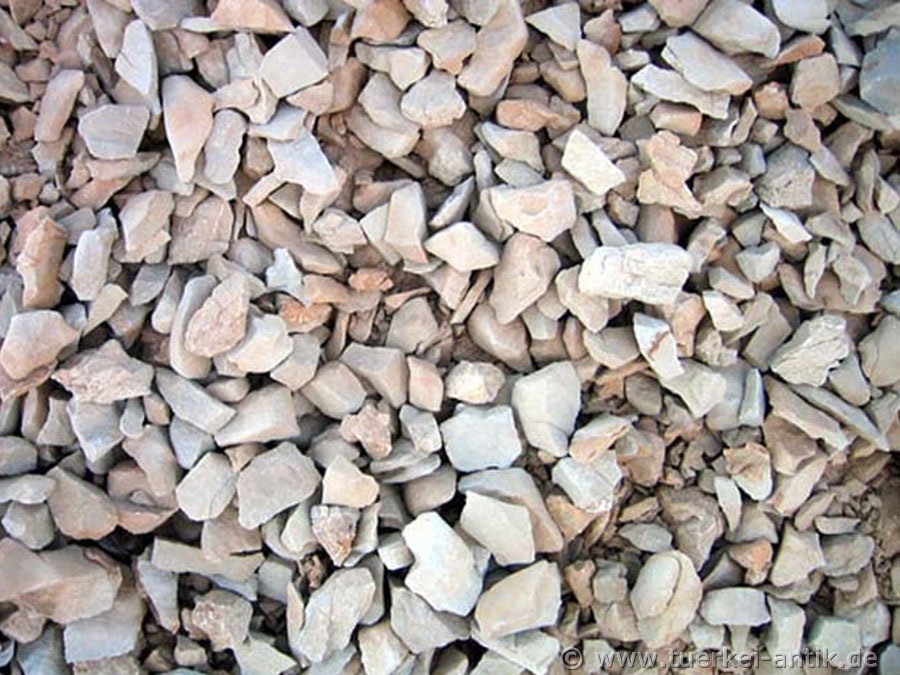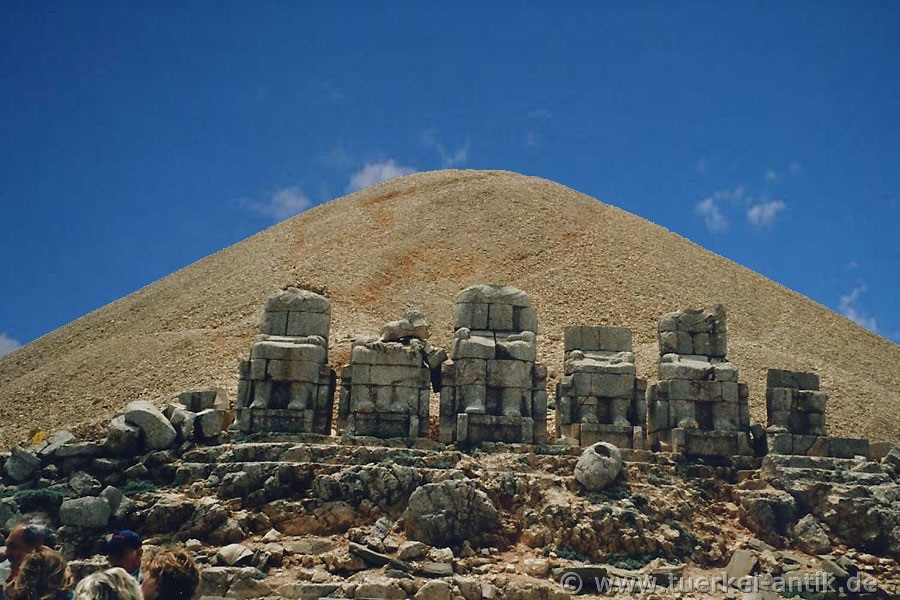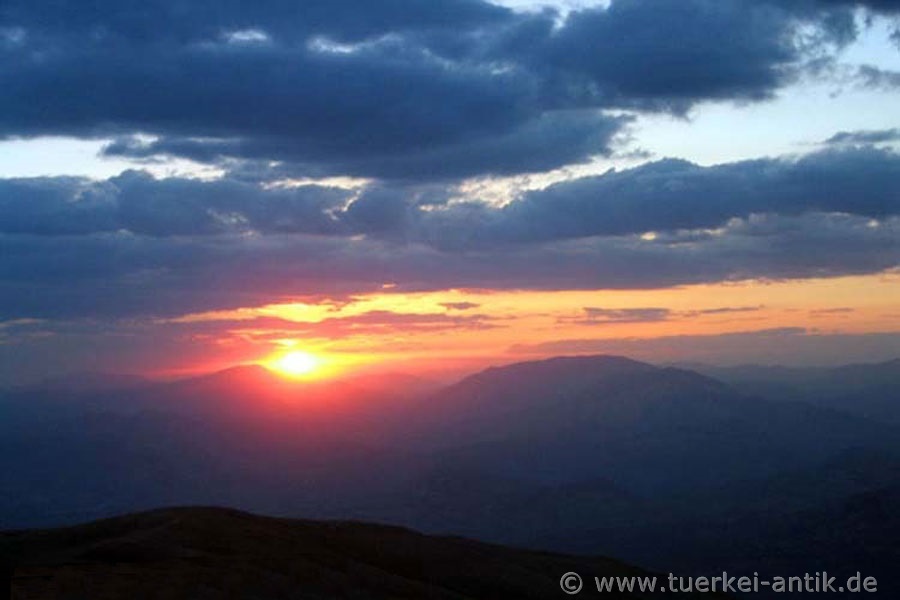 |
| Nemrut Dağı in Cappadocia | |||
|
|
|
||
| The ascent to the tumulus | |||
|
One of the most unbelievable stone testimonies of human urge for recognition: the terraces of the gods on the Nemrut Dağı. On the top of the mountain rises a monumental combination of sanctuary and tomb. It was built by the late Hellenistic king Antiochos I. Theos (69-36 BC) of Kommagene. The sanctuary was to be the centre of a new religion that united Persian and Greek mythology.
|
|||
|
|
|||
| The tumulus consists of these gravel stones | |||
|
The tomb consists of a rubble pile with a diameter of 150 m and a height of 50 m. The hill, the ascent of which is forbidden, is surrounded by three terraces to the north, west and east. On the western and eastern terraces there are large statues of gods and steles representing King Antiochos in the company of several gods. To make room for the construction of the sanctuary, about 300,000 m³ of massive rock were removed. To the left of the western terrace a 10 m high rest of the former summit can still be seen. |
|||
|
|
|||
| The East Terrace | |||
|
On the eastern and western terraces there are large statues of gods depicting King Antiochos in the company of Greek-Persian gods. In addition, there are various rows of relief steles depicting the king's ancestral gallery and other relatives, as well as images of ritual acts. In order to make room for the erection of the sanctuary, about 300,000 m³ of massive rock were reduced to gravel stones and piled up. Three processional paths lead up to the mountain. |
|||
|
|
|||
| On the West Terrace | |||
|
In the course of time, earthquakes, storms and numerous visitors have contributed to the destruction of a large part of the reliefs and the once 8-10 m high statues are now headless. The heads are placed in front of the statues.
|
|||
|
|
|||
| On the West Terrace | |||
|
|
|||
|
The cult site was rediscovered in 1881 by the German engineer Karl Sester. Since then, Turkish, American and German archaeologists have carried out excavations here. The first explorers were Otto Puchstein and Carl Humann in 1882/83, followed in the 1950s and 1960s by a German-American excavation team with Friedrich Karl Dörner and Theresa Goell from the American Schools of Oriental Research. In 1987, the tomb shrine was included in the UNESCO World Heritage List. Since then, various groups, including the International Nemrud Foundation and most recently the members of the Commagene Nemrut Conservation and Development Program of the Middle East Technical University, have been active on the mountain. |
|||
|
|
|||
|
|
|||
| On the West Terrace | |||
|
|
|||
|
Shortly after his coronation, Antiochos himself gave himself the name Theos (God), an unusual self-deification also in the context of the Hellenistic ruler cult.
|
|||
|
|
|||
|
|
|||
|
Sunset at Nemrut |
|||
|
The monumental statues with the altar and the reliefs offer an impressive picture, especially at sunrise and sunset. The complex is considered unfinished, as no traces of ritual acts have been found. The present Turkish name of the mountain refers to the legendary King Nimrod, who appears in the Bible and the Koran. |
|||
|
The Nemrut Dagi is located in the north of the district Kâhta of the Turkish province Adiyaman.
|
|||
| Photos: @chim | |||
| Translation aid: www.DeepL.com/Translator | |||
| Source: Wikipedia and others | |||
|
|
|||




